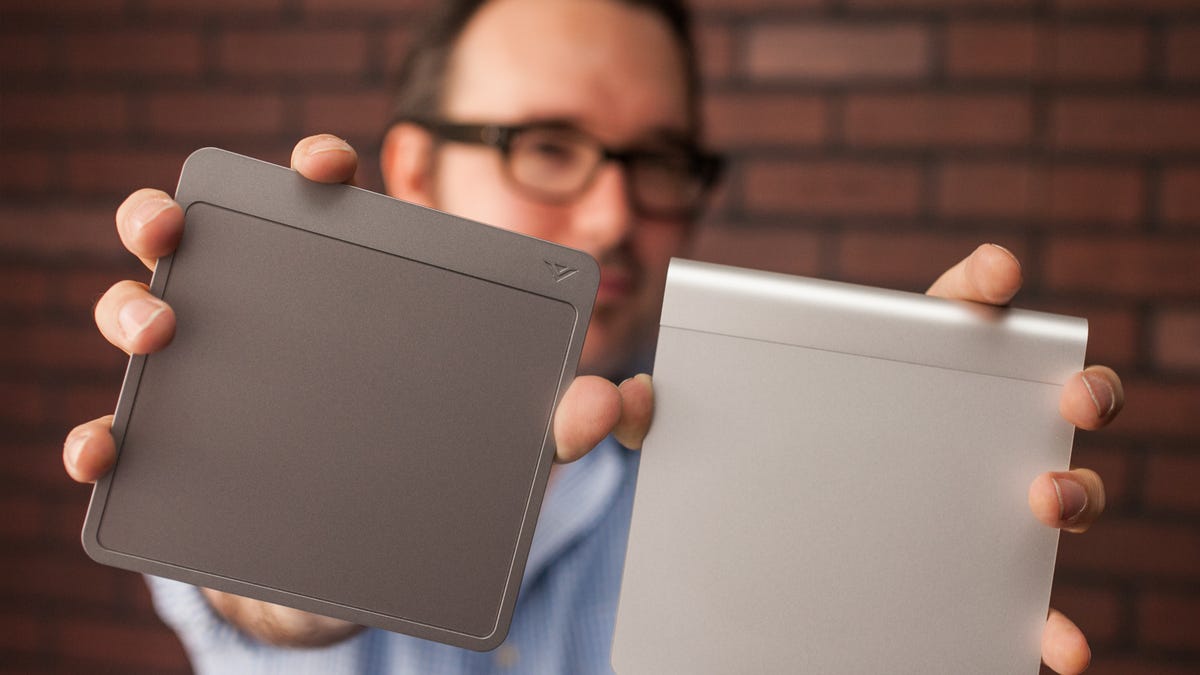Exit the mouse, enter the touch pad
Will your mouse be replaced by a standalone touch pad? Apple, HP, and others are betting on it.

In the run-up to Windows 8, the one keyword you hear most often is "touch." That means touch-screen tablets and slates, touch panels added to traditional clamshell laptops, and touch-enabled all-in-one desktops. It also refers to Microsoft's new emphasis on touch gestures for touch pads, as well as the ambitious plans component companies such as Synaptics have for touch input in Windows 8.
While all this touch talk is going on, there's another trend gaining steam in the background. The standalone touch pad, once a very obscure computer accessory (even the Apple Magic Trackpad failed to make much of a splash at launch) is getting a shot at the mainstream, at least if you judge by the recent uptick in systems that include it.
An example is the just-announced HP Spectre One all-in-one. This $1,299 desktop with a 23-inch 1080p display doesn't have a touch screen, but it does include a standalone touch pad, which matches up with an also-included wireless keyboard. Together, the pair looks an awful lot like the Apple wireless keyboard and trackpad combo sitting on my desk right now.
Vizio recently entered the PC market with a collection of new laptops and all-in-one desktops. The all-in-one models skipped the traditional pack-in mouse in favor of a touch pad. With its proprietary wireless connection and lack of Windows 8 optimization, this was not our favorite touch-pad experience, but it's another example of PC makers taking tentative steps away from the mouse.
With Windows 8, Microsoft is supporting the same set of gesture controls on touch screens and touch pads -- and that means both the touch pads built into laptops, and the growing category of standalone touch pads, used with both laptops and desktops.
We've seen several as-yet-unannounced examples of standalone touch pads, both bundled with specific systems and as standalone accessories, so this trend is going to continue.
But, what are the chances of taking the next logical step and seeing the venerable computer mouse replaced, perhaps within a couple of years, by the touch pad?
The computer mouse, with its left and right buttons, scroll wheel, and single optical sensor (or trackball, for the old-schoolers) has changed little over the years, aside from shedding the USB (or earlier PS/2) cable for a wireless dongle or Bluetooth. A handful of models have added touch sensors along the top or extraneous side buttons, but the basic concept is the same, and increasingly far removed from how we interact with the rest of our high-tech devices.
As I pointed out a couple of years ago, when Apple's iPad was first introduced (in my controversial "Death of the mouse" article), we've been subtly training people to use touch as a primary user interface for many years. First with the laptop touch pad, later through touch-screen phones and tablets, and soon, in living room video game consoles through the Nintendo Wii U. The odd man out in this scenario is the traditional mouse.
For laptops, this becomes especially important. Imagine using a laptop and its built-in touch pad on the go, then docking your laptop at your home or office desk. Switching to a mouse is common enough, but not an especially smooth transition. Much more natural would be docking your laptop and switching to an external standalone touch pad.
This becomes especially true now that nearly all laptops use multifinger gestures. Apple has done the best job of this to date, but Windows 8 will offer some stiff competition, and in my extensive hands-on testing, Microsoft's new OS seems deliberately engineered for a mouse-free future.
To pre-empt a chorus of angry comments about how your favorite games or applications really require the quick, precise movement of a mouse, I say that I totally agree. First-person shooters and Photoshop retouching are better with a mouse, for now. But, the key here is that future games and apps will be built with touch screens and touch pads in mind. Even now, most new PC games are built around game pad support, and anyone can see the advantages of as many as 10 simultaneous inputs for art and editing programs.
Even though many of the new standalone touch pads are near-future products that have not been officially announced or released yet, there's one example that works extremely well today: Apple's awkwardly named Magic Trackpad. Using a MacBook somewhere close to 50 percent of the time, I've ditched the desktop mouse docking an OS X laptop and gone full touch pad (along with a wireless keyboard).
What started as an experiment felt entirely natural in less than one day, as I'm using the same multitouch gestures and shortcuts whether I'm on a laptop or at my desk (my colleague Scott Stein is also a member of the league of standalone touch-pad lovers).
What Apple, HP, and Vizio know now, with other PC makers and accessory companies set to join the chorus before the year is out, is that the touch pad is here to stay, and the mouse is looking more archaic than ever.

